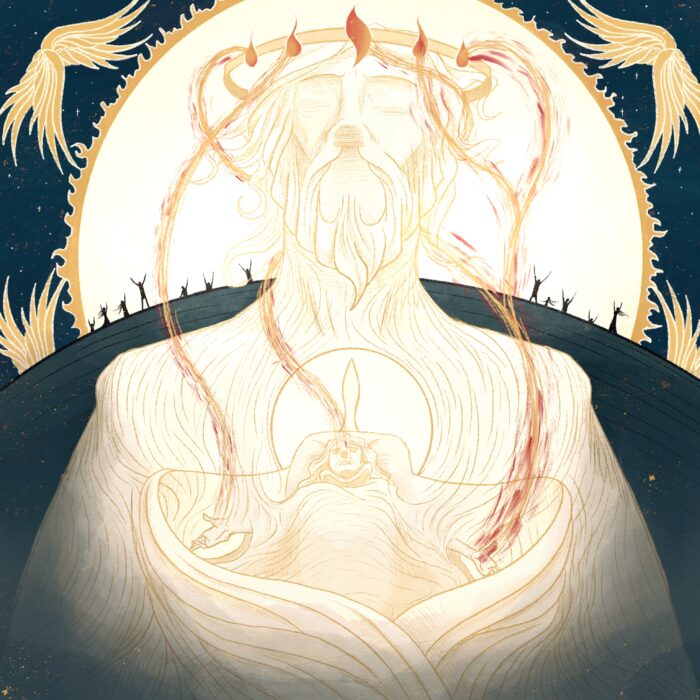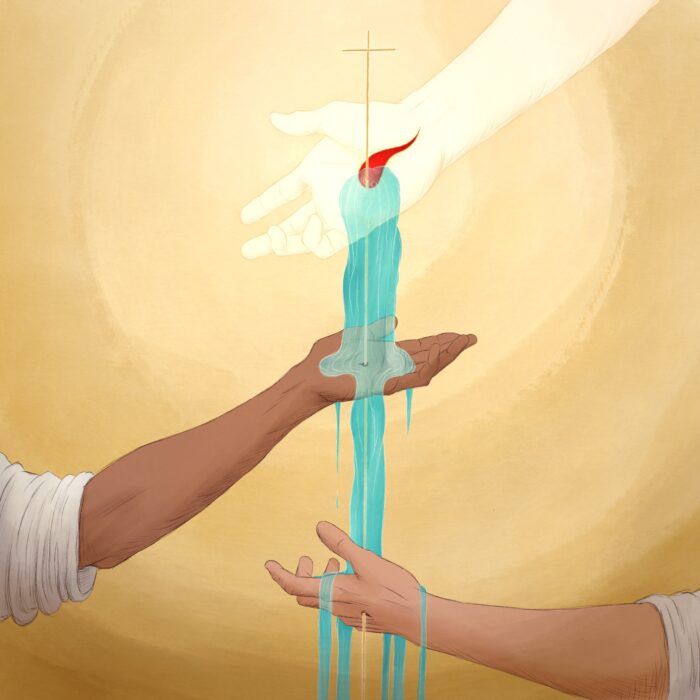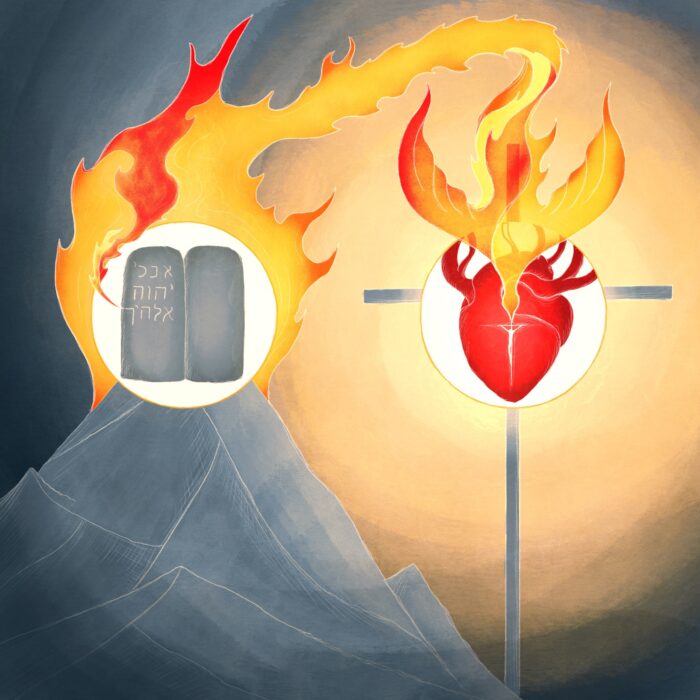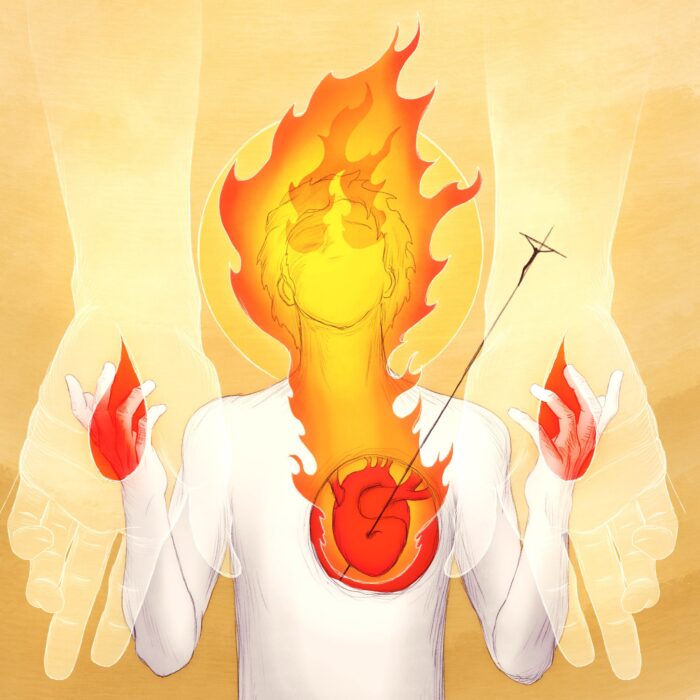A bit of a longer post today.
Besides creating art for Full of Eyes, I’m also the pastor of a small congregation in rural Ohio. Recently, Anna Mae, the mother of one of our members, fell down the stairs at her home and her frail, 94 year, old body was terribly broken. The prayers and ministrations and conversations that have been drawn out from the Body of Christ—locally and nationally—during the weeks of Anna Mae’s hospitalization moved me to muse over Paul’s words in 2 Corinthians 1:5, ‘For just as the sufferings of Christ abound unto us, so through Christ also abounds our comfort.’
In this passage, Paul assumes that his own suffering (and, by extension, all Christian suffering) is the suffering of Christ. That is to say, since Jesus made our suffering His suffering on the cross, we may now understand our present, temporal sufferings as united to and a genuine sharing in the sufferings of His Passion. This all stems from our Spirit-wrought union to Christ and the fact that, as Christians, we *really are* part of His Body…the implications to this are many and here’s a snippet from a recent journal entry considers some of them that went on to become today’s visual exegetical image:
Because all Christian suffering is borne in the sufferings of Christ—and so inseparably joined to the resurrection of Christ—all Christian suffering is *fruitful,* all Christian suffering is *working,* all Christian suffering is *achieving* the riches of Christ’s resurrection-illumined sufferings….A Christian cannot suffer in vain because the sufferings of Christ—which all Christian sufferings are—are not in vain, as the resurrection proves once and for all.
Paul tells us that one of the fruits of Christian suffering is the comfort of other Christians. This is a principle that we’ve already seen played out in the Psalms where the crushing of David’s soul like grapes in a winepress yields the sweet wine of comfort and peace and enduring joy for countless saints throughout the ages. But the same is true for all sufferings of Christ’s Body…As with her Lord, so with her self, the Church cannot be wounded but that it should bring healing…
The bleeding of the Church—whose bleeding is the bleeding of Christ—is a healing flow….the wounds of the Bride are for the binding up of wounds, the blood of the Bride is balm for the broken, the weeping of the Bride yields the cool waters of relief (waters that will be turned, in time, the the nuptial wine of joy), and all of this because the Bride’s wounds and blood and tears are those of Christ, whose crucified and risen Body she truly is.
And the bleeding of the Bride is the bleeding of her members, the tears of the bride are the tears of her members, the wounds of the Bride are the wounds of her members…my blood, your blood, my tears, your tears, my brokenness, my disease, my sorrow, my anguish, my chronic and acute pain—and yours, Christian—are the wounds of the Bride, and Her wounds are the wounds of Her Lord, and His wounds are for the healing of the world.
As dear Anna Mae, 94 years old, lies in bed with a shattered body and wearied mind, breathing out what are likely the final days of her life her woundedness and weariness are fountains of healing and springs of comfort and wells of peace pouring out unto the healing the Body, of the world, and, indeed, of the cosmos itself. Why? Because her woundedness is the woundedness of the Bride, whose woundedness is the woundedness of Christ, whose woundedness achieves the restoration and reconciliation of all things (Phil.2:9-11, Col.1:19-20). As Anna Mae lies on a hospital bed in the middle of Ohio, beset by weakness and confusion, mercifully woven by the Spirit into the mortal sufferings of her Lord, her agonies (as they are united to His own) are securing the bowing of every knee and confessing of every tongue and rejoicing of every reconciled heart before the face of the risen Jesus Christ.
What a wonder and a mystery and a hope beyond all reckoning to be a part of the Body of the anastasiform Son of God.




